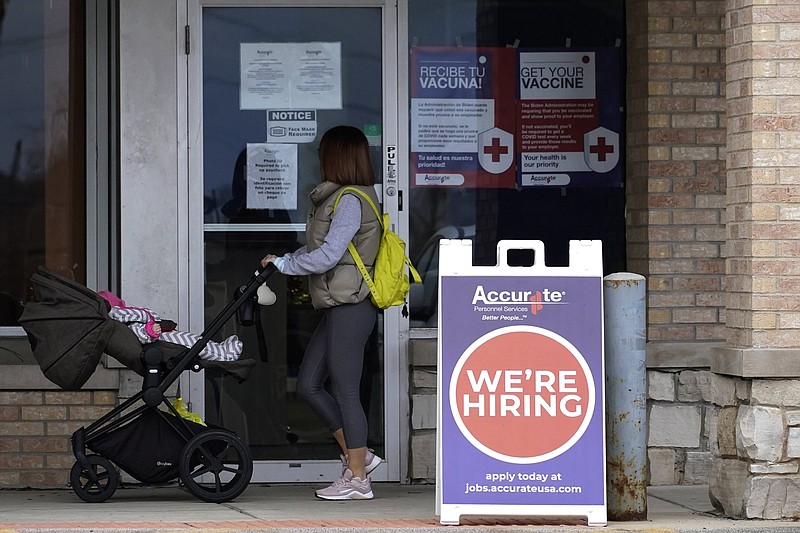WASHINGTON -- The number of Americans applying for unemployment benefits rose last week to the highest level since mid-November, but still low by historic standards.
U.S. jobless claims climbed by 23,000 last week to 230,000, the Department of Labor said Thursday. The four-week moving average, which smooths out week-to-week blips, rose nearly 6,300 to almost 211,000.
The weekly applications, a proxy for layoffs, have risen in four of the past five weeks, a period that runs in tandem with the spread of the omicron variant. Yet the jobs market has bounced back strongly from last year's coronavirus recession. Jobless claims had fallen mostly steadily for about a year and they dipped below the pre-pandemic average of around 220,000 a week.
"The rise in claims likely reflects an increase in layoffs due to the surge in covid cases," said economists Nancy Vanden Houten and Kathy Bostjancic of Oxford Economics. "Claims may remain elevated in the near term, but we expect initial claims will gravitate back to the [200,000] level once the omicron wave passes. Encouragingly, there are indications that cases from the omicron variant are peaking."
Altogether, 1.6 million people were collecting jobless aid the week that ended Jan. 1.
Companies are holding on to workers at a time when it's difficult to find replacements. Employers posted 10.6 million job openings in November, the fifth-highest monthly total in records going back to 2000. A record 4.5 million workers quit their jobs in November -- a sign that they are confident enough to look something better.
[CORONAVIRUS: Click here for our complete coverage » arkansasonline.com/coronavirus]
The job market has bounced back from the brief but intense coronavirus recession in 2020. When covid-19 hit, governments ordered lockdowns, consumers hunkered down at home and many businesses closed or cut back hours. Employers slashed millions of jobs in March and April 2020, and the unemployment rate rocketed to 14.7%.
But huge amounts of government spending -- and eventually the rollout of vaccines -- brought the economy back. Last year, employers added a record 6.4 million jobs -- but that still was not enough to make up for the unprecedented 9.4 million jobs lost in 2020. And hiring slowed in November and December last year as employers struggled to fill job openings.
Still, the unemployment rate fell last month to a pandemic low 3.9%.
Analysts say December's uptick in unemployment claims should be short-lived as the latest covid-19 wave ebbs and as employers continue to push to retain staff amid an ongoing labor shortage.
"The spike in the number of covid cases is forcing temporary business closures, which likely pushed some affected workers to apply for jobless benefits," Bloomberg economist Eliza Winger said in a note before the data were released. "Most businesses are open, albeit operating at limited capacity."
The jump may also reflect difficulties adjusting for seasonal effects over the holidays, which have made claims figures in recent weeks hard to interpret.
Information for this article was contributed by Olivia Rockeman of Bloomberg News (TNS).
